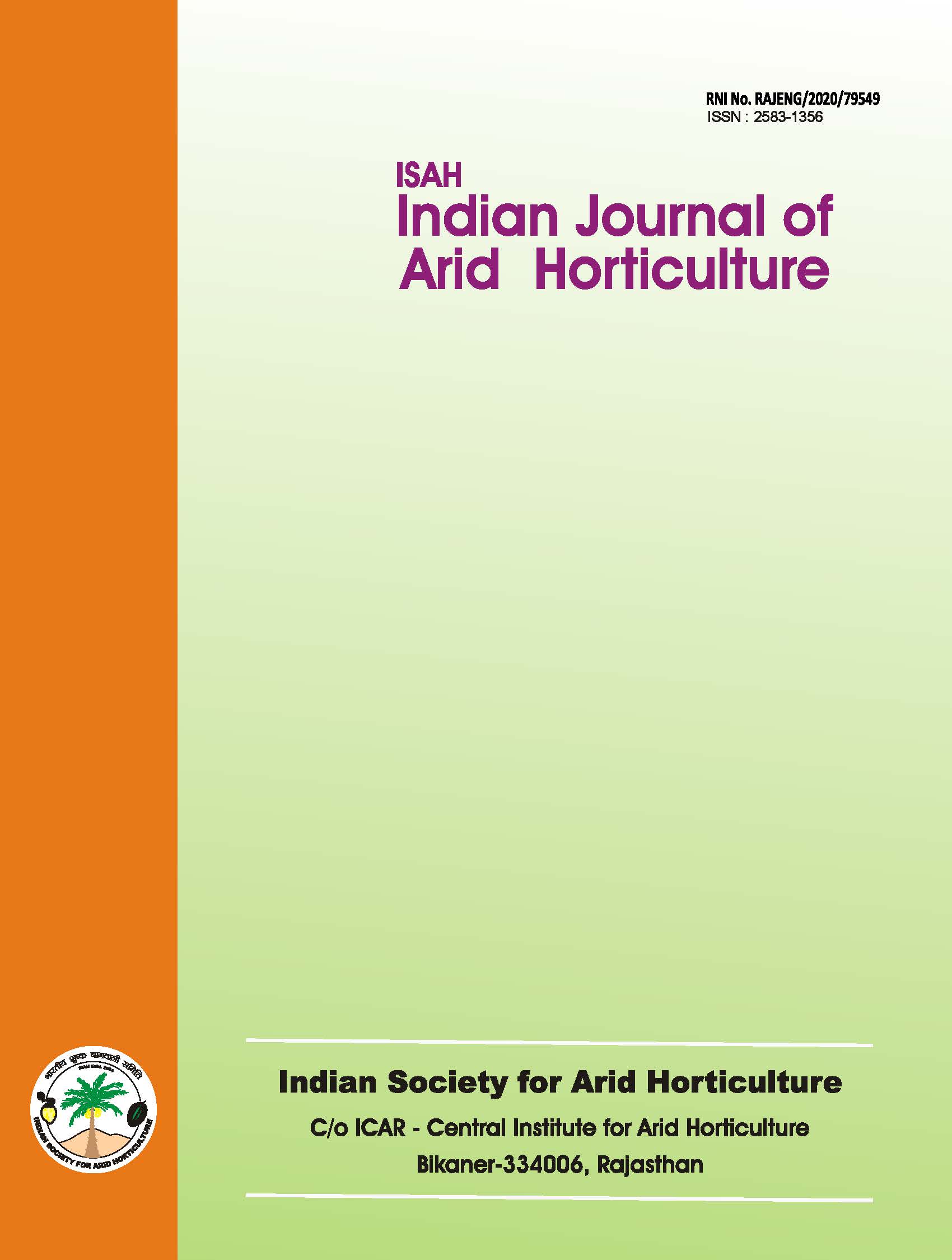Insect pest management in aonla (Emblica officinalis Gaertn.) by farmers of Gujarat
Keywords:
snakebite, statusAbstract
Aonla (Emblica officinalis Gaertn.) also known as Indian gooseberry is a deciduous, hardy tree, native of India comes up well in salt affected soils and wastelands. Fruits are rich in vitamin-c of 600mg/100g of edible portion (Gopalan et al., 6). One hundred grams of edible portion of aonla contains 81.8g moisture, 0.5g protein, 0.1g fat, 0.5g minerals, 3.4g crude fibre, 13.7g carbohydrates, 58kcal energy, 50mg calcium, 20mg phosphorus, 1.2mg iron, 9μg carotene, 0.03mg thiamine, 0.01mg riboflavin, 0.2mg niacin, 256mg choline, 5mg sodium, 225mg potassium (Gopalan et. al., 6). It has great medicinal value in treatment of dysentery, diarrhorea, haemorrhages, bilousness, digestive system disorders, jaundice, coughs, skin infections, cleaning wounds, snakebite, scorpion-stinging (Parmar and Kaushal, 8; Chadha, 3). Area, production and productivity of aonla in India are 49620ha, 150500t and 3.03t ha' (Dhandar and Saroj, 5). Emerging insect pests affect the productivity. Hence a study was conducted to assess the status of insect pest management by the aonla farmers of Gujarat.Downloads
References
Chadha, K. L. 2003. Handbook of Horticulture. Indian Council of Agricultural Research, New Delhi.
CIAH. 2003. Central Institute for Arid Horticulture, Annual Report for 2002-2003.
Dhandar, D. G. and Saroj, P. L. 2004. Changing scenario in arid horticulture. In: Advances in Arid Horticulture, Vol. I. P. L. Saroj, B. B. Vashistha, and D. G. Dhandar (Eds.). International Book Distributing Co., Lucknow, pp. 1-27.
Gopalan, C., Sastri, B. V. R., and Balasubramanian, S. C. 2004. Nutritive Value of Indian Foods. National Institute of Nutrition, Hyderabad, pp. 47-95.
IIHR. 2000. Indian Institute of Horticultural Research (ICAR) Annual Report, 1998-99.
Parmar, C. and Kaushal, M. K. 1982. Emblica officinalis. In: Wild Fruits. Kalyani Publishers, New Delhi, pp. 26-30.

